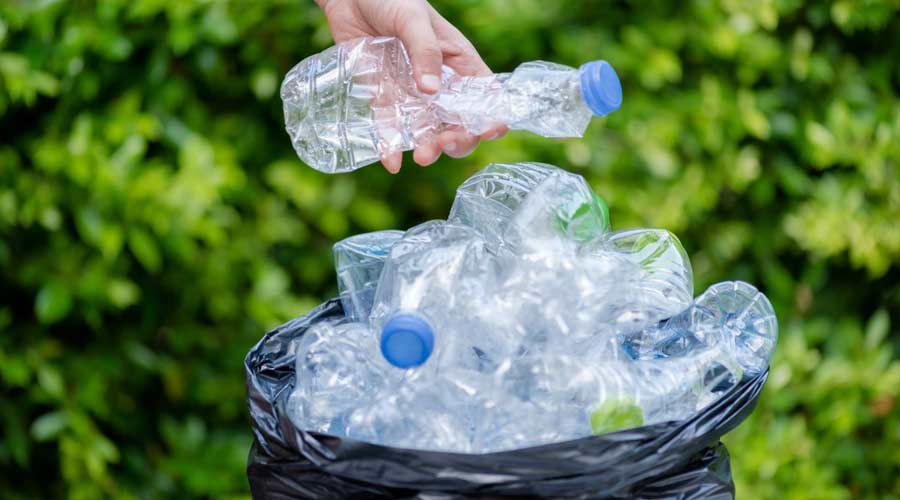
Contributed by The Ashkin Group
Most plastic bottles today are made of PET (polyethylene terephthalate) plastic. Estimates are that about 500 billion PET plastic bottles, most made to contain beverages, are manufactured annually. That’s about one million bottles per minute.
“If they were stacked like building blocks, that’s enough plastic bottles to reach four-fifths of the way to the sun,” says Steve Ashkin, the professional cleaning industry’s leading advocate for sustainability. “This is creating an environmental nightmare. To prevent this, we first must understand what happens to all that plastic.”
According to Ashkin, this is the typical afterlife scenario of PET plastic bottles:
Wishful-Recycling
Most commercial facilities have recycling bins for plastic bottles. However, people tend to place all types of plastic in these bins. Referred to as “wishful recycling,” they hope it can be recycled. But wishful recycling can inhibit the entire recycling process. Instead, look for the numbers “1” or “2” on the triangle of PET bottles. These can be recycled.
Sorting and Scanning
Most plastic bottles are not tossed in recycling bins. Instead, they are treated as waste. Many trash collection services use sorting techniques such as scanners to identify PET plastic. It is then separated from glass, paper and non-recyclable trash.
Shredding, Packaging, & Downcycling
The PET bottles are shredded, impurities are removed, and then the plastics are packaged. From here, they are sold to recycling centers, which recycle or “downcycle” bottles. Downcycling means the product is recycled, but the resulting product is of lower value than the original product. For example, it may be used as backing on a carpet.
Landfills…A Big Problem
Only about 30 percent of PET bottles are recycled. Some are incinerated, but most end up in landfills, where decomposing can take up to 400 years. In the interim, poisonous ingredients may leak into waterways or release greenhouse gases into the atmosphere.
“That’s our big problem,” adds Ashkin. “Our landfills are already overflowing, and we know greenhouse gasses are contributing to climate change."
Solutions
But there are solutions. Ashkin recommends the following:
• Use refillable plastic bottles.
• For PET bottles, look for the triangle and numbers mentioned earlier.
• Empty the bottle before tossing; the contents can inhibit the recycling process.
• Take the PET bottles to redemption centers. They can sterilize them for reuse.
• Spread the word. This encourages people to recycle and manufacturers to make new materials that are more readily recycled, reducing their environmental impact.

 The Down and Dirty on Cleaning in Virus Season
The Down and Dirty on Cleaning in Virus Season How Surfactant Use is Expanding in Commercial Cleaning
How Surfactant Use is Expanding in Commercial Cleaning Clean Buildings Conference
Clean Buildings Conference